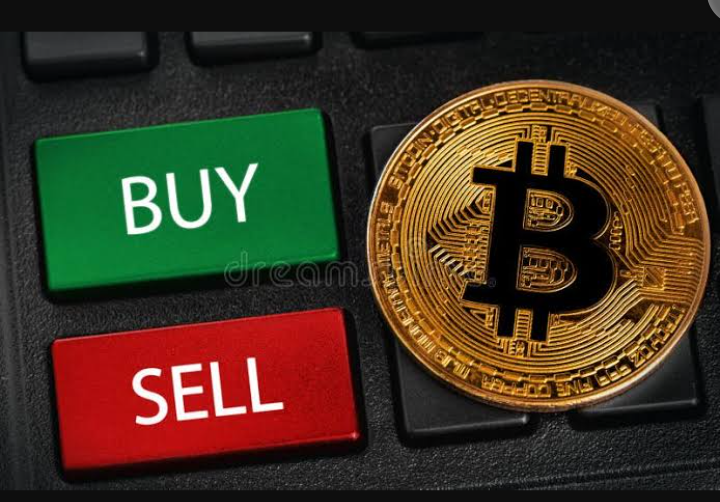Bitcoin Price Falls Below $93K: Should You Sell or Buy?
Understanding the Current Market Situation
Bitcoin’s price has taken a dramatic turn, sparking debates among traders and investors. After reaching a high of $99,600, Bitcoin quickly dropped below $93,000. This decline followed a 40% surge in price, triggered by Donald Trump’s U.S. presidential election win—an event many viewed as bullish for cryptocurrencies.
Now, with prices fluctuating, investors face a dilemma: Should they sell to lock in profits or buy more Bitcoin at a lower price?
This article dives into recent market developments, key reasons behind the price movements, and actionable strategies for both short-term traders and long-term investors.
Why Are Long-Term Investors Selling Bitcoin?
The Impact of Long-Term Holders
Data from Glassnode reveals that long-term investors are offloading Bitcoin at an unprecedented rate, selling approximately 366,000 BTC per month as of November 2024. This marks the highest sell-off rate since April 2024.
Who Is Selling?
The majority of sales come from investors who acquired Bitcoin 6 to 12 months ago. These investors are capitalizing on their gains as Bitcoin nears the psychological threshold of $100,000, with the current price hovering around $93,637.
Looking Back: Historical Bitcoin Market Trends
Bitcoin’s price movements often mirror past market cycles. A look at previous patterns provides insight:
- 2013: Bitcoin surged for six weeks before correcting in the seventh.
- 2017: After seven weeks of gains, it plunged 34% in the following week.
- 2020/2021: A six-week rally was followed by a significant drop.
These trends suggest the current price action aligns with Bitcoin’s typical boom-and-bust cycles.
Could Bitcoin Drop Further?
Expert Predictions
Some analysts caution that Bitcoin might fall by 25%, potentially bottoming out near $70,500.
Technical Indicators
- RSI (Relative Strength Index): Currently above 70, signaling overvaluation and a potential correction.
- Price vs. Moving Averages: Bitcoin is trading well above its 50-day and 200-day averages, hinting at an overheated market.
Market Sentiment
While Trump’s pro-crypto stance has fueled optimism, concerns about regulation and broader economic uncertainty loom large, creating a mixed outlook.
Trump’s Influence on Bitcoin
Pro-Crypto Policies
Donald Trump’s return to the presidency has revived optimism in the crypto market. His promises of clearer regulations, support for Bitcoin mining, and the idea of a U.S. Bitcoin reserve could positively impact Bitcoin’s long-term prospects.
Possible Outcomes
- Regulatory Clarity: May attract institutional investors.
- Enhanced Mining Support: This could strengthen the Bitcoin network.
- Market Legitimacy: Bolstered by potential U.S. endorsement of Bitcoin as a reserve asset.
Spot Bitcoin ETFs: A Game-Changer
What Are Spot ETFs?
Spot Bitcoin ETFs directly hold Bitcoin, unlike futures-based ETFs. This structure simplifies investment for institutions and retail traders alike.
Institutional Adoption
The introduction of spot Bitcoin ETFs has driven institutional participation, boosting demand and contributing to Bitcoin’s recent price surge.
Long-Term Expectations
Analysts predict spot ETFs could propel Bitcoin beyond $100,000, with some forecasting prices of $150,000 to $200,000 in the coming years.
Navigating the Current Market
Short-Term Trading Strategies
Volatility presents opportunities for traders who:
- Use technical analysis to time buy and sell decisions.
- Set stop-loss orders to minimize potential losses.
- Diversify their portfolios with other cryptocurrencies or assets.
Long-Term Investment Approaches
For those focused on Bitcoin’s long-term potential, the following strategies may prove beneficial:
- Dollar-Cost Averaging (DCA): Regularly investing a fixed amount, regardless of price fluctuations.
- Fundamental Analysis: Evaluating Bitcoin’s adoption and macroeconomic trends.
- HODLing: Maintaining holdings through market ups and downs with confidence in Bitcoin’s future growth.
Economic Factors Shaping Bitcoin’s Future
Inflation and Interest Rates
Bitcoin’s capped supply of 21 million coins makes it a hedge against inflation. However, rising interest rates by central banks, like the Federal Reserve, have dampened risk on investments, including Bitcoin.
Geopolitical Events
Global tensions, such as the Russia-Ukraine conflict, often spur demand for Bitcoin as a haven. However, prolonged uncertainty can also create erratic market movements.
Money Supply
Central banks’ tightening of monetary policies has restricted liquidity, pressuring Bitcoin’s price. A reversal in these policies could lead to renewed demand.
Technological Innovations Driving Bitcoin’s Adoption
Lightning Network
This technology enables faster and cheaper transactions, enhancing Bitcoin’s usability, especially in regions without access to traditional banking systems.
Taproot and Ordinals
- Taproot: Improves Bitcoin’s privacy and introduces advanced smart contract functionality.
- Ordinals: Opens avenues for NFTs on the Bitcoin blockchain, broadening its use cases.
Growing Institutional Interest
Institutional adoption continues to grow, with companies like MicroStrategy holding over 150,000 BTC as part of their inflation hedge strategies. Meanwhile, traditional financial firms are rolling out Bitcoin-related services, further legitimizing the market.
Cheap Remote Crypto Mining for you – Click Here
Regulatory Developments and Their Impact
U.S. Regulations
The U.S. regulatory environment remains uncertain. While the SEC seeks to protect investors, Trump’s pro-crypto stance could foster innovation and adoption.
Global Trends
Countries like El Salvador have embraced Bitcoin, while others, like China, remain restrictive. Balanced, global regulatory frameworks will be critical to Bitcoin’s growth.
Conclusion: Should You Sell or Buy Bitcoin?
The answer depends on your investment horizon and risk appetite.
- For Traders: Leverage market volatility but proceed with caution.
- For Long-Term Investors: Focus on fundamentals and consider current prices an opportunity to accumulate.
As Warren Buffett famously said, “Be fearful when others are greedy, and greedy when others are fearful.” Wise, informed decisions during turbulent times can lead to long-term success.


